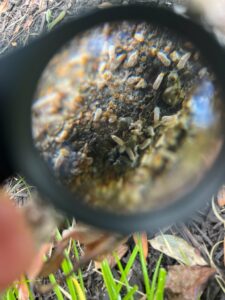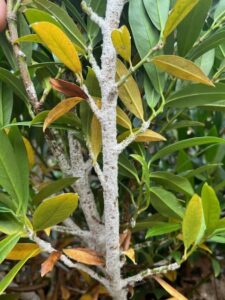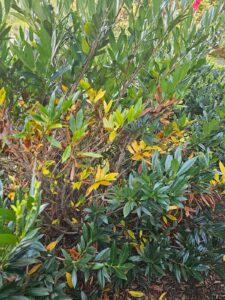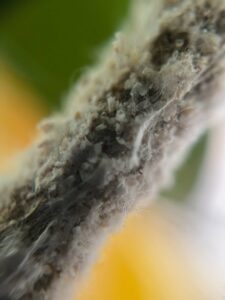Pest Alert – Cherry Laurel Scale
go.ncsu.edu/readext?960166
en Español / em Português
El inglés es el idioma de control de esta página. En la medida en que haya algún conflicto entre la traducción al inglés y la traducción, el inglés prevalece.
Al hacer clic en el enlace de traducción se activa un servicio de traducción gratuito para convertir la página al español. Al igual que con cualquier traducción por Internet, la conversión no es sensible al contexto y puede que no traduzca el texto en su significado original. NC State Extension no garantiza la exactitud del texto traducido. Por favor, tenga en cuenta que algunas aplicaciones y/o servicios pueden no funcionar como se espera cuando se traducen.
Português
Inglês é o idioma de controle desta página. Na medida que haja algum conflito entre o texto original em Inglês e a tradução, o Inglês prevalece.
Ao clicar no link de tradução, um serviço gratuito de tradução será ativado para converter a página para o Português. Como em qualquer tradução pela internet, a conversão não é sensivel ao contexto e pode não ocorrer a tradução para o significado orginal. O serviço de Extensão da Carolina do Norte (NC State Extension) não garante a exatidão do texto traduzido. Por favor, observe que algumas funções ou serviços podem não funcionar como esperado após a tradução.
English
English is the controlling language of this page. To the extent there is any conflict between the English text and the translation, English controls.
Clicking on the translation link activates a free translation service to convert the page to Spanish. As with any Internet translation, the conversion is not context-sensitive and may not translate the text to its original meaning. NC State Extension does not guarantee the accuracy of the translated text. Please note that some applications and/or services may not function as expected when translated.
Collapse ▲Cherry laurels are having many health problems lately. As of September 26 I have had four reports in two days about scale insects infesting cherry and skip laurels. If you have these plants you should get out and check them for white fuzzy growth on the stems. Scale insects can definitely kill plants.
According to the NC State Plant Disease and Insect Clinic the insect is definitely a scale, probably white peach scale. Scales are small insects that feed use needle-like mouthparts to feed on plant sap. Heavy infestations of the insects leads to leaf yellowing, browning, and eventual dieback of branches.
Scales are easier to manage if you catch them early. Scouting for scale on laurels should begin in June. Scales can reproduce three times annually. Most scales produce a waxy substance that protects them from predators and makes pesticides less effective. Scale insects are definitely easier to control when you catch them early.

When there is a heavy infestation of white prunicola scale and dieback is severe, it may be best to remove the shrub altogether rather than try to treat it. Depending on where the infestation is located, you may be able to prune out branches selectively and discard them.
Scale insects overwinter as eggs. Dormant season sprays of horticultural oils are recommended to help prevent infestations. Horticultural oils are relatively toxic to scales, aphids, spider mites, and other plant pests. Horticultural oils are relatively non-toxic to people but should not be inhaled. Oils can cause serious lung problems if inhaled.
According to the NC State Pest Control Manual the following products can be used to control armored scales on landscape shrubs:
acephate (Orthene)
acetamiprid (TriStar)
afidopyropen (Ventigra)
azadirachtin (Azatin)
bifenthrin (Talstar)
buprofezin (Talus)
carbaryl (Sevin)
dinotefuran (Safari) systemic
horticultural oil (various)
insecticidal soap (various)
neem oil (Triact)
pyriproxyfen (Distance)
spinetoram + sulfoxaflor (XXpire)
*Inclusion of product names neither implies effectiveness, nor endorsement by the author or NC State University. Not all products described may be locally available, and the active ingredient content may be changed by manufacturers. Read the label CAREFULLY and follow all label instructions whenever using any pesticides as required by the EPA.







